In an ideal world, humans would live in total harmony with nature, utilizing only the resources necessary for their survival while maintaining environmental balance and ensuring the natural and adequate renewal of harvested resources. However, the growing human population and relentless development are significantly disrupting this balance. Consequently, the upgrading and development of new infrastructures have become intrinsic to human progress.
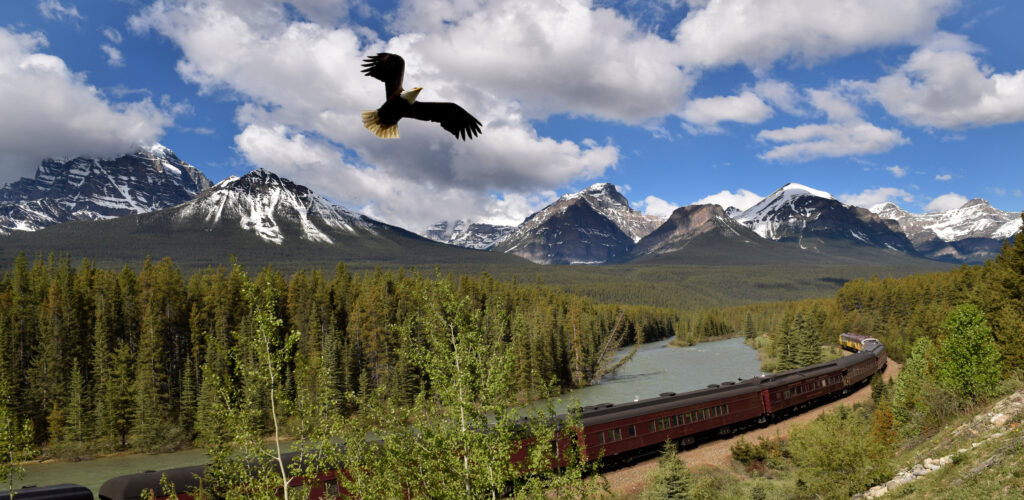
INFRASTRUCTURE FOR A SUSTAINABLE FUTURE
As the impacts of man-made climate change become more apparent through the rising frequency and intensity of floods and forest fires, it is essential to adopt a holistic approach to infrastructure development, prioritizing sustainable practices.
OUR VISION
Our vision is to engage in the planning, design, construction, and operation of infrastructure with a commitment to respecting the natural and social environment, prioritizing sustainability as our foremost objective.
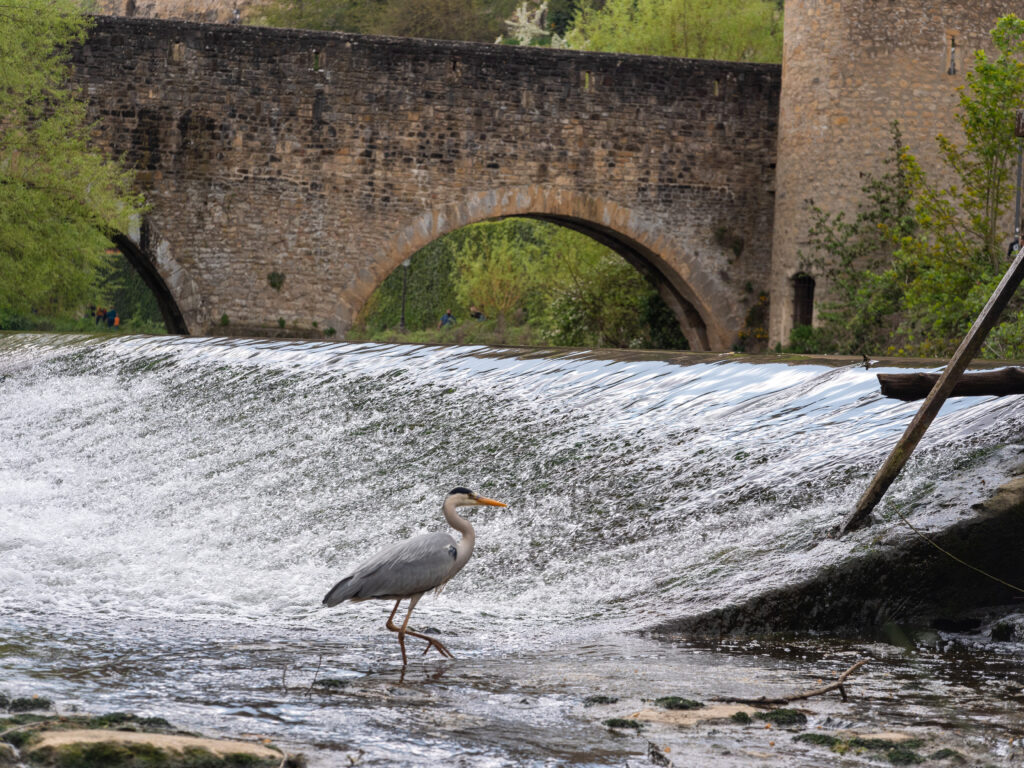

SUSTAINABILITY: COMBINING POLITICAL CONSTRAINTS, ECO-DESIGN AND COLLABORATION
Political and economic constraints must be taken into account, as they inevitably influence project planning and design.
One of the key challenges in sustainable project development, or eco-design, is fostering collaboration among all participants and experts involved. It is essential that everyone is convinced of the project’s legitimacy and environmental objectives. This challenge can be mitigated by effectively communicating the proposed solutions and their benefits to the various stakeholders and experts.
This necessitates prioritizing sustainable development from the initial project planning stage and maintaining this focus throughout the infrastructure’s entire lifecycle. We must adopt a sequential approach, beginning with the selection of transformative projects that benefit the community while minimizing environmental impact. During project planning and design, it is crucial to avoid impacts on the surrounding environment wherever possible and to mitigate any unavoidable effects. Ultimately, affected habitats should be restored and compensated for, ideally before construction begins.
INNOVATIVE SOLUTIONS FOR SUSTAINABLE PROJECTS
At SYSTRA, we are committed to pushing back the boundaries of innovation for sustainable, environmentally-friendly projects. Our digital solutions enable us to assess the environmental impact of projects and optimize their integration into the environment.
● CarbonTracker: Comparison of GHG emissions and life-cycle analysis.
● ClimatePlus: Climate scenarios and targeting of climate change adaptive measures.
● Geographic Information Systems (GIS): Global vision of biophysical and social issues.
● Drones: Asset for inventories in remote or complex environments.
● Sonar: Precise aquatic surveys, even in turbid environments.
● Continuous measurement sensors: Continuous surveys of air, sound and water quality.
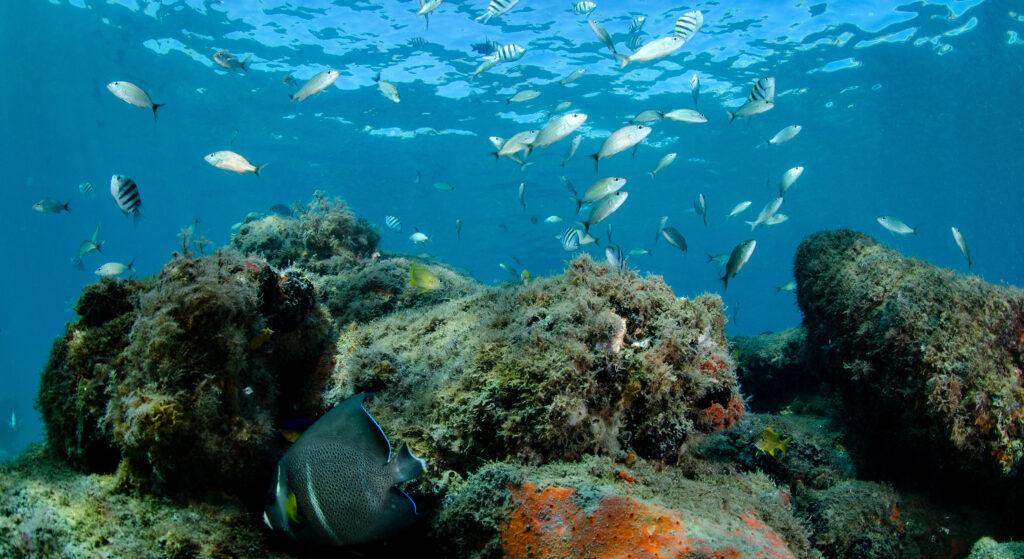
Improving Ecological Connectivity and Social Acceptance of Linear Projects
Linear projects, such as railroads and roads, can impact a very wide territory and numerous communities. One way of reducing the effects of linear projects on ecological connectivity is to design wildlife crossings. These crossings can take various forms, such as oversized culverts with suitable substrate for the target species, and the re-establishment of forest massifs between existing natural cores. When integrated from the initial planning stage, environmental solutions such as wildlife crossings can also facilitate the social acceptance of such projects.
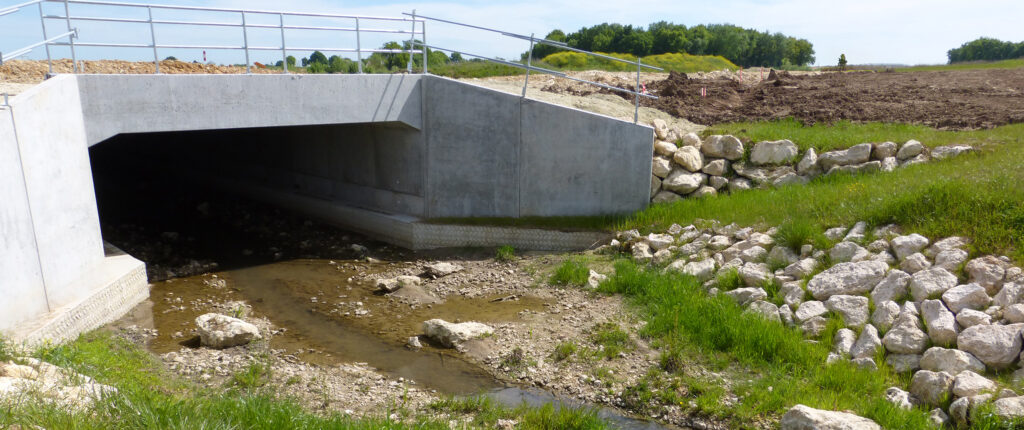
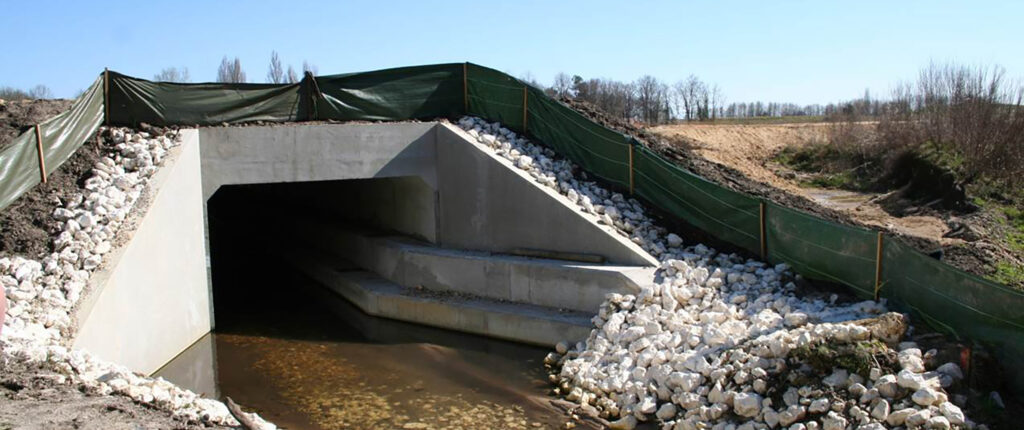
Illustration of hydraulic structures.
The banks on either side facilitate the passage of wildlife.
Source: COSEA (South Europe Atlantic Project – SEA)
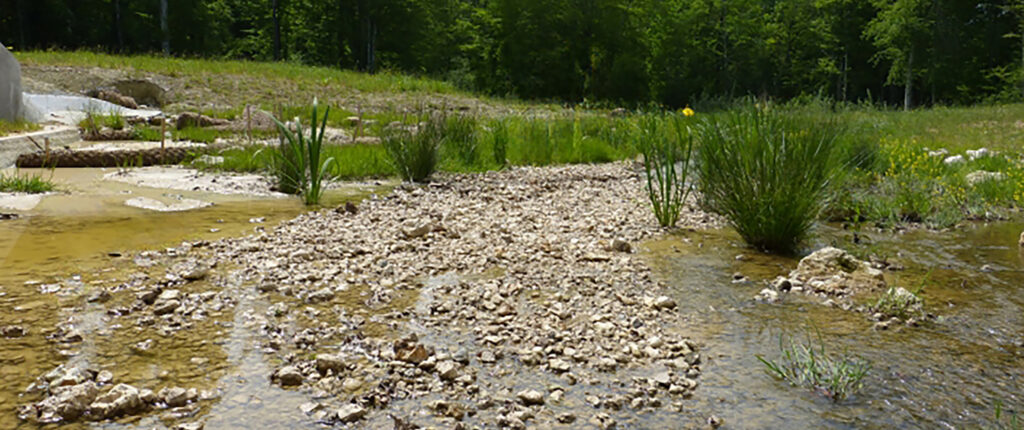
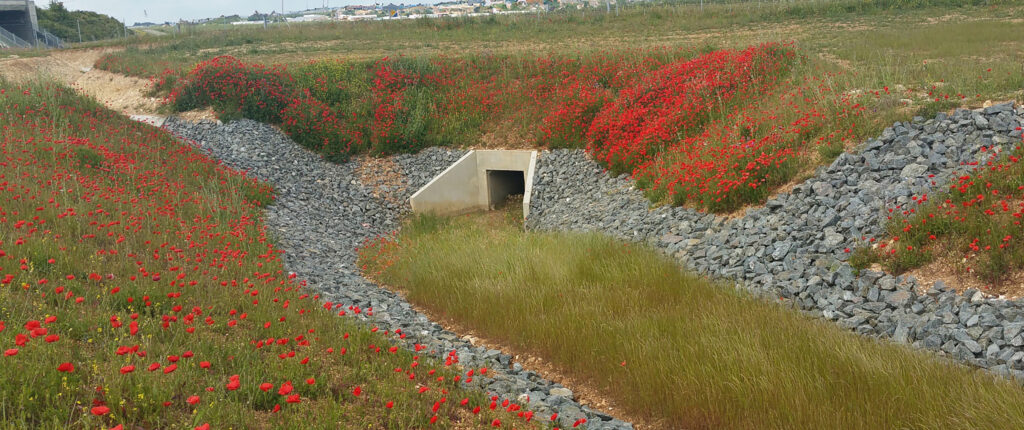
The picture on the right shows the restoration of the wetland.
The picture on the left shows stonework to limit soil erosion in the immediate surroundings of the structure.
Source: COSEA (South Europe Atlantic Project – SEA)
SYSTRA, COMMITTED TO DESIGNING A SUSTAINABLE AND RESPONSIBLE FUTURE
Looking ahead, the future is uncertain, but by selecting projects that benefit both society and nature, and by embracing eco-design principles, we may be able to reverse or at least slow down the current trends. It is imperative that everyone contributes according to their capabilities. SYSTRA is committed to designing and developing sustainable transport projects, offering solutions for low-carbon transportation, climate change adaptability, energy efficiency, and energy transition, including electromobility and hydrogen.
At SYSTRA, sustainable development is a key element of the Group’s operations and one of the pillars of the company’s growth. These solutions and services are essential for a sustainable future for our planet.
related articles
For further information, explore our other Experts’ Insights articles on the environment in the transportation sector:
● Drones #3: Exploring the Depths – Underwater Drones Revolutionizing Civil Engineering
● Drones #4: Unveiling the Environmental Assessment Revolution
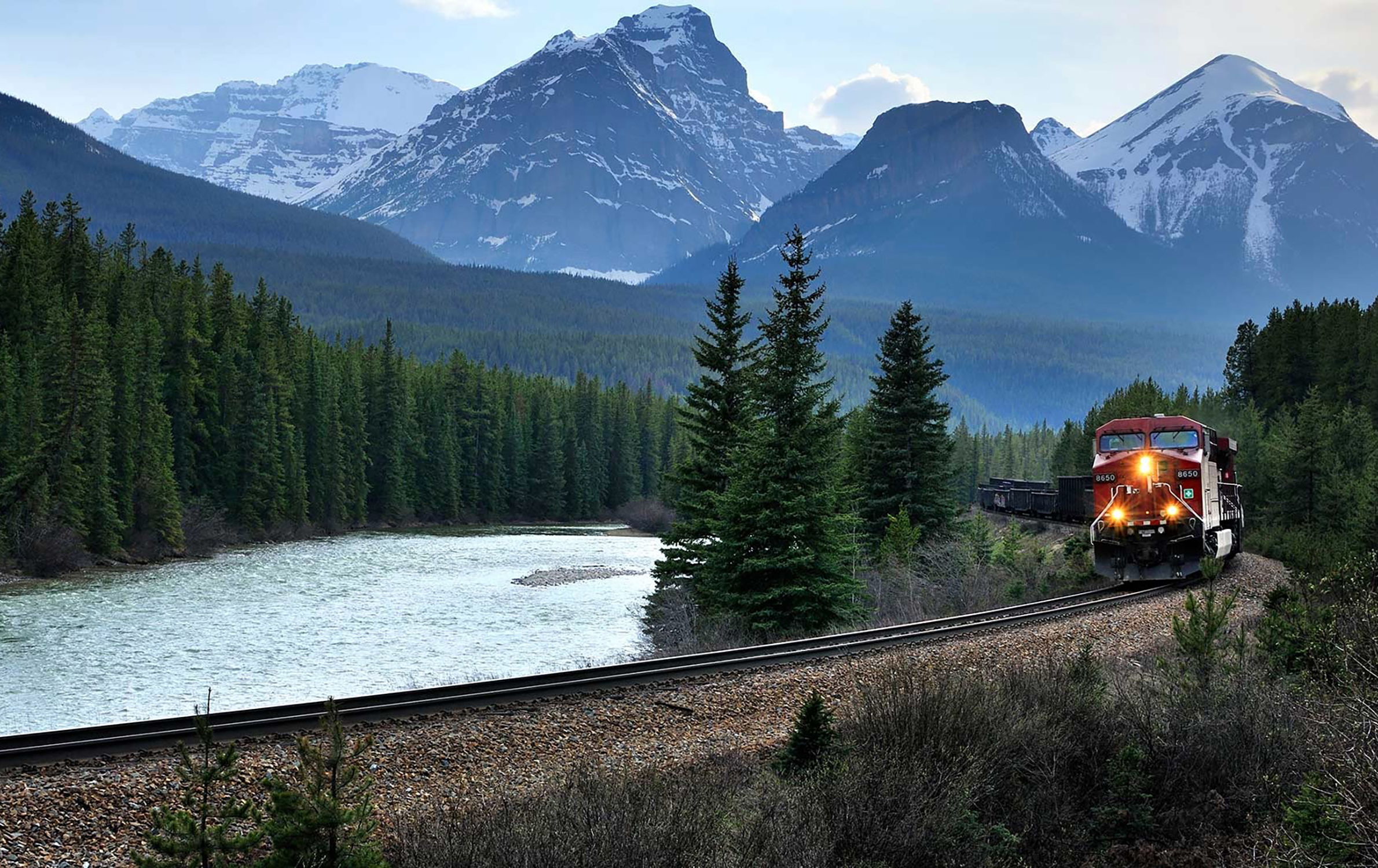
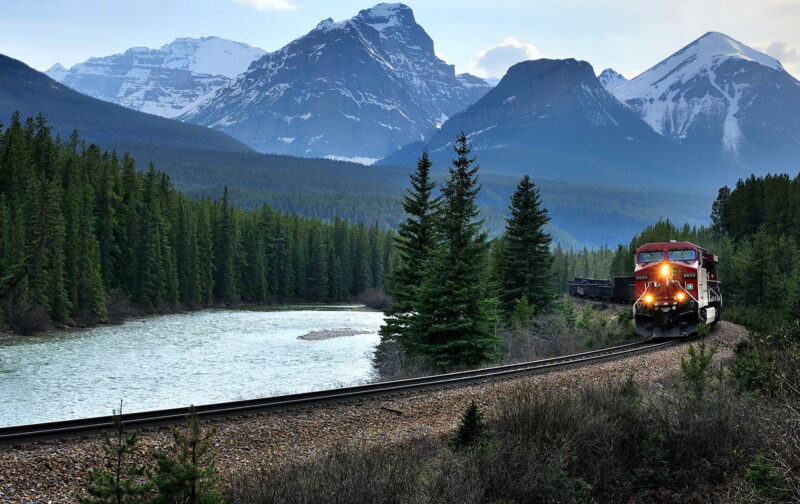
 Australia
Australia  Brazil
Brazil  Chile
Chile  China
China  Columbia
Columbia  Denmark
Denmark  Egypt
Egypt  France
France  India
India  Indonesia
Indonesia  Ireland
Ireland  Italy
Italy  Malaysia
Malaysia  New Zealand
New Zealand  Norway
Norway  Panama
Panama  Peru
Peru  Poland
Poland  Portugal
Portugal  Saudi Arabia
Saudi Arabia  Singapore
Singapore  Spain
Spain  South Korea
South Korea  Sweden
Sweden  Taiwan
Taiwan  Thailand
Thailand  Türkiye
Türkiye  United Kingdom
United Kingdom  United States
United States  Vietnam
Vietnam